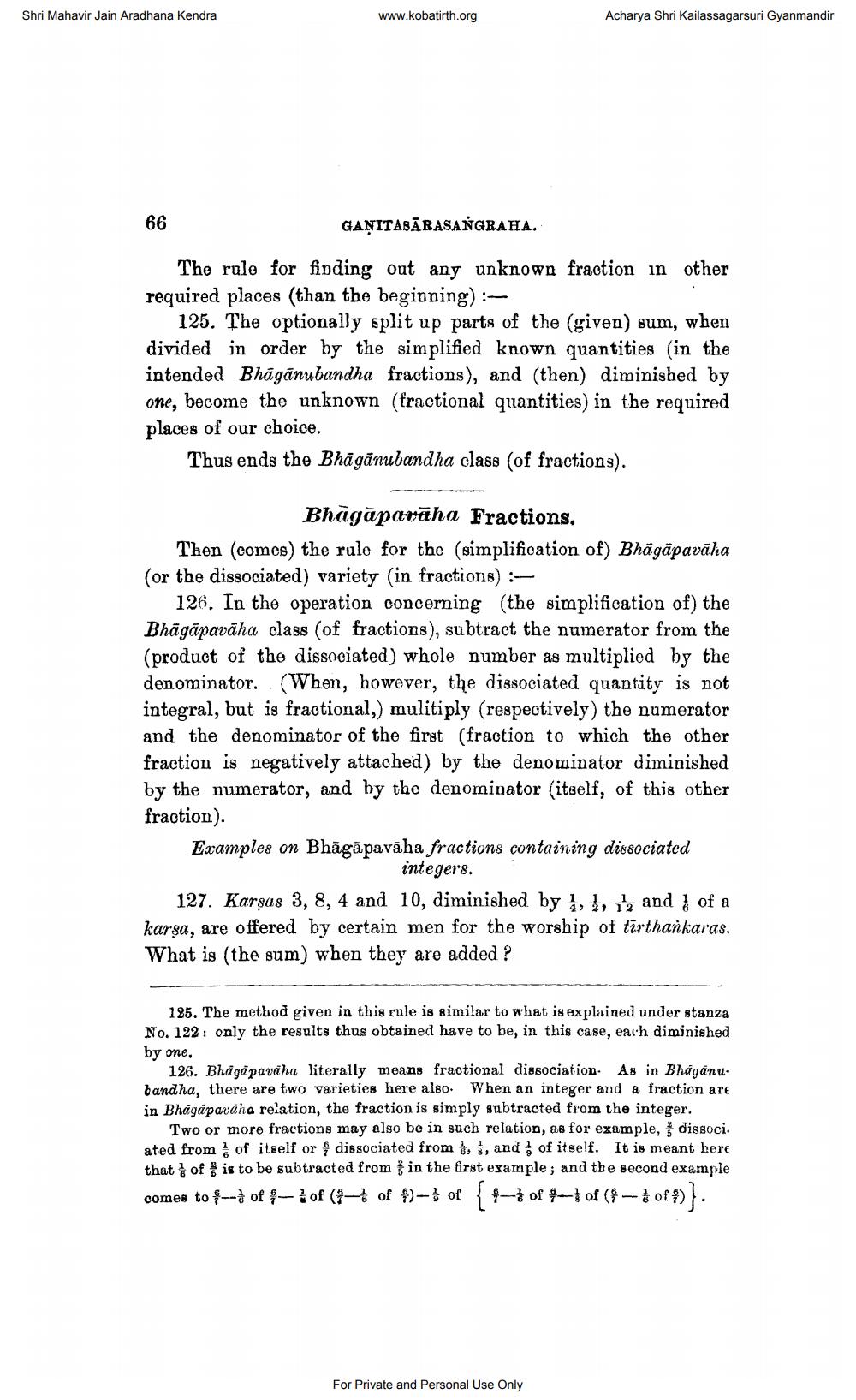________________
Shri Mahavir Jain Aradhana Kendra
www.kobatirth.org
Acharya Shri Kailassagarsuri Gyanmandir
66
GANITABĀRASANGRAHA.
The rule for finding out any unknown fraction in other required places (than the beginning):
125. The optionally split up parts of the (given) sum, when divided in order by the simplified known quantities (in the intended Bhāgānubandha fractions), and (then) diminished by one, become the unknown (fractional quantities) in the required places of our choice.
Thus ends the Bhāgānubandha class (of fractions).
Bhāgāpavāha Fractions, Then (comes the rule for the (simplification of) Bhāgāpavāka (or the dissociated) variety (in fractions) :
126. In the operation concerning (the simplification of) the Bhāgāpavāha class (of fractions), subtract the numerator from the (product of the dissociated) whole number as multiplied by the denominator. (When, however, the dissociated quantity is not integral, but is fractional,) mulitiply (respectively) the numerator and the denominator of the first (fraction to which the other fraction is negatively attached) by the denominator diminished by the numerator, and by the denominator (itself, of this other fraction). Examples on Bhāgā pavāha fractions containing dissociated
integers. 127. Karşus 3, 8, 4 and 10, diminished by 1, 1, tz and of a karsa, are offered by certain men for the worship of tīrthankaras. What is the sum) when they are added ?
125. The method given in this rule is similar to what is explained under stanza No. 122: only the results thus obtained have to be, in this case, each diminished by one,
126. Bhågā paväha literally means fractional dissociation. As in Bhaganubandha, there are two varieties here also. When an integer and a fraction are in Bhågāpaváha relation, the fraction is simply subtracted from the integer.
Two or more fractions may also be in such relation, as for example, dissoci. ated from of itself or dissociated from & g, and of itself. It is meant here that of is to be subtraoted from $ in the first example; and tbe second example comes to 1-3 of 3 – of (84 of ) – } of 4-3 of 1-1 of ($ - of )}.
For Private and Personal Use Only




